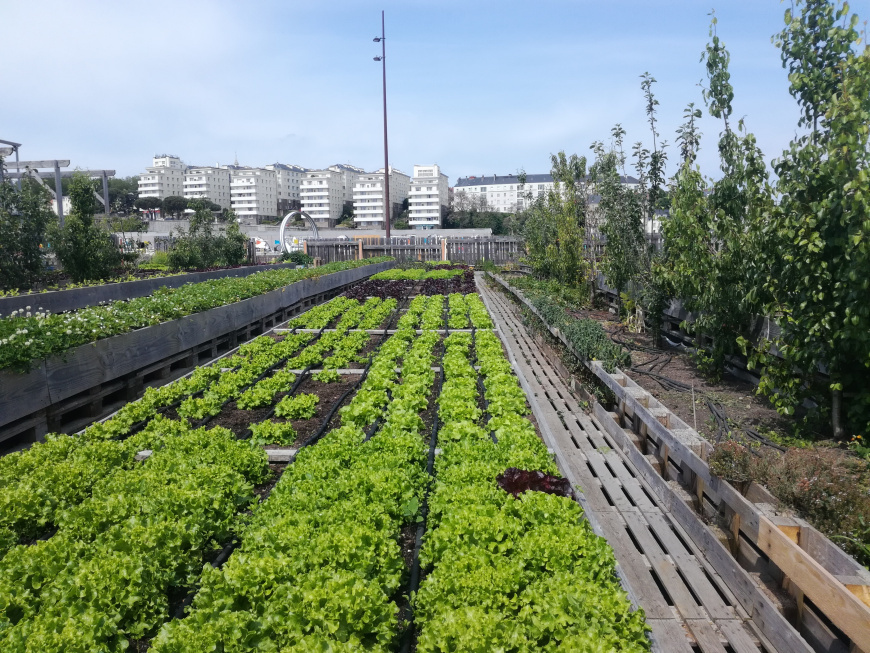City Blooming - An Overview
City Blooming - An Overview
Blog Article
The Greatest Guide To City Blooming
Table of ContentsThe Buzz on City Blooming8 Easy Facts About City Blooming DescribedGetting My City Blooming To WorkCity Blooming for BeginnersGetting My City Blooming To Work
Interested in expanding food for sale in the City of Chicago? Below is a checklist of regularly asked inquiries concerning the policies and policies that cultivators need to take into consideration when planning a metropolitan farming task.
The zoning amendment does not customize any type of various other codes managing composting, building licenses, purchasing or leasing City had residential property, service licenses or ecological contamination. There are existing codes that manage these problems and they stay in full impact and might be applicable to your project. Area yards are commonly possessed or handled by public entities, civic companies or community-based companies and preserved by volunteers.
Urban ranches expand food that is planned to be offered, either on a not-for-profit or for-profit basis. Because of their business function, metropolitan ranches require a service certificate. Yes. A neighborhood yard is allowed to offer surplus create that was grown on website if the sales are accessory or subservient to the yard's main purpose described above.
City Blooming - The Facts
Composting is enabled however just for plant material that is produced and made use of on site. The amount of garden compost product can not surpass 25 cubic backyards at any kind of offered time according to the requirements in 7-28-715 of the City's Municipal Code. Yes. Due to the fact that the dirt at a lot of new yard sites requires modifying, compost, soil, wood chips, or various other products can be gotten to build or boost the expanding space - garden care.

If a building license is called for after that the hoophouse will certainly be thought about an accessory structure. You can figure out even more regarding the structure license requirements by speaking to the Division of Buildings. The 25,000-square-foot dimension limitation is intended to avoid a single area garden from dominating an offered block or diminishing the block's existing household or business personality.
The restriction does not use to gardens located in Public Open Area (POS) areas. Can there be even more than one area garden that is 25,000 square feet on a single block? Secure fencing is not called for, however, yards that have big auto parking locations may be called for to mount fence or other landscaping features.
The Of City Blooming
B1 & B2 districts require that all business usage activities be conducted inside. R districts restrict commercial activity. The policies mirror the objective and intent of the Zoning Code. Is fence required for metropolitan farms? Yes. Fences might be required, together with landscaping and screening, for sure parking lot and outdoor work or storage areas relying on place and the particular task taking area.
Yes. Urban farms require building authorizations and zoning authorizations before building. Other forms of city evaluation might be called for depending upon particular structures, tasks, size, landscaping, licensing, public health and stormwater administration issues. Numerous of these demands are recognized in the job layout or allowing process, nonetheless, the applicant may be accountable to separately determine particular licenses or allows that may be called for.
Yes. The kind of certificate is determined by what is happening at the website. The Department of Service Matters and Consumer Defense can aid determine the certain kind of company certificate that's needed. Yes. Off here are the findings road car park is required for a lot of commercial jobs in Chicago. The needed variety of car park spaces is based on the number of workers servicing site and not the square video footage of the growing room.
The 8-Second Trick For City Blooming

A city ranch can sell compost material created on website, however, the operation should abide with the policies in 7-28-715 of the Chicago Municipal Code. Aquaponic systems are enabled indoors on city ranches in several zoning areas.
Approximately five hives or swarms of honey may be kept as an accessory usage. Beekeepers have to sign up with the Illinois Department of Farming. For more details regarding the proposed zoning amendment you might speak to the Division of Housing and Economic Growth, Bureau of Planning and Zoning at 312.744.8563.
, which takes location in country areas at the edge of suburbs.
The smart Trick of City Blooming That Nobody is Discussing
, who look for to form social networks established on a common values of nature and neighborhood holism. These networks can establish by method of official institutional support, ending up being integrated into regional community preparation as a "change community" activity for sustainable city development.
In either situation, the much more direct access to fresh veggie, fruit, and meat items that might be know via city farming can boost food protection and food safety and security while reducing food miles, causing lower greenhouse gas emissions, consequently adding to environment modification reduction. A few of the first evidence of metropolitan agriculture originates from Mesopotamia.
Report this page